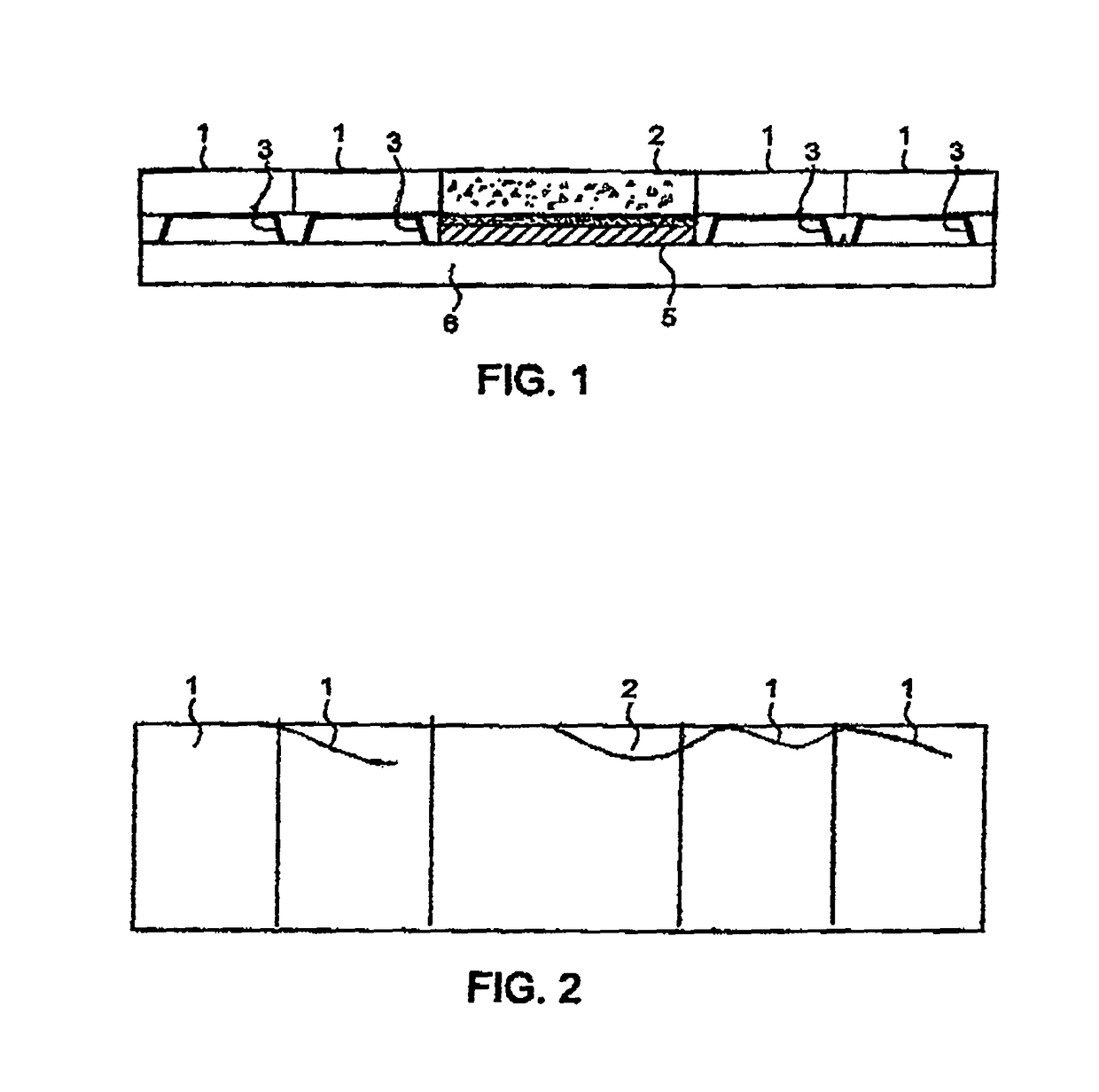Launch pad flame deflector structure and method of making the same
a technology of flame deflector and launch pad, which is applied in the direction of coating, coating, metallic material coating process, etc., can solve the problems of not showing no changes, and structures produced in this manner that cannot exhibit uniform high resistance to rocket flames
- Summary
- Abstract
- Description
- Claims
- Application Information
AI Technical Summary
Benefits of technology
Problems solved by technology
Method used
Image
Examples
Embodiment Construction
[0013]FIG. 1 schematically shows a metal backplate or substrate 6 of a flame deflector. An upper, rocket-facing surface of the backplate supports a plurality of modules 1, 2 which will be impacted by the flames and any debris coming out of the rocket. Suitable modules include metal bar or plate modules 1, preferably composed of a metal having high thermal conductivity, such as copper, carbon steel or alloy steel, and refractory material modules 2, preferably composed of a calcium aluminate cement (CAC) having high resistance to thermal degradation. During the Titan I program, mentioned above, a Portland cement was used; see standards ASTM C150 or European EN 197-1. The module has either a generally flat front face or a front face curved to conform to the shape of the metal deflector substrate, and four side faces, each orthogonal to the front face. The module has a rear face, adapted for attachment to a supporting metal substrate. Preferably, based upon the engine structure of the r...
PUM
| Property | Measurement | Unit |
|---|---|---|
| Temperature | aaaaa | aaaaa |
| Electrical resistance | aaaaa | aaaaa |
| Durability | aaaaa | aaaaa |
Abstract
Description
Claims
Application Information
 Login to View More
Login to View More - R&D
- Intellectual Property
- Life Sciences
- Materials
- Tech Scout
- Unparalleled Data Quality
- Higher Quality Content
- 60% Fewer Hallucinations
Browse by: Latest US Patents, China's latest patents, Technical Efficacy Thesaurus, Application Domain, Technology Topic, Popular Technical Reports.
© 2025 PatSnap. All rights reserved.Legal|Privacy policy|Modern Slavery Act Transparency Statement|Sitemap|About US| Contact US: help@patsnap.com



